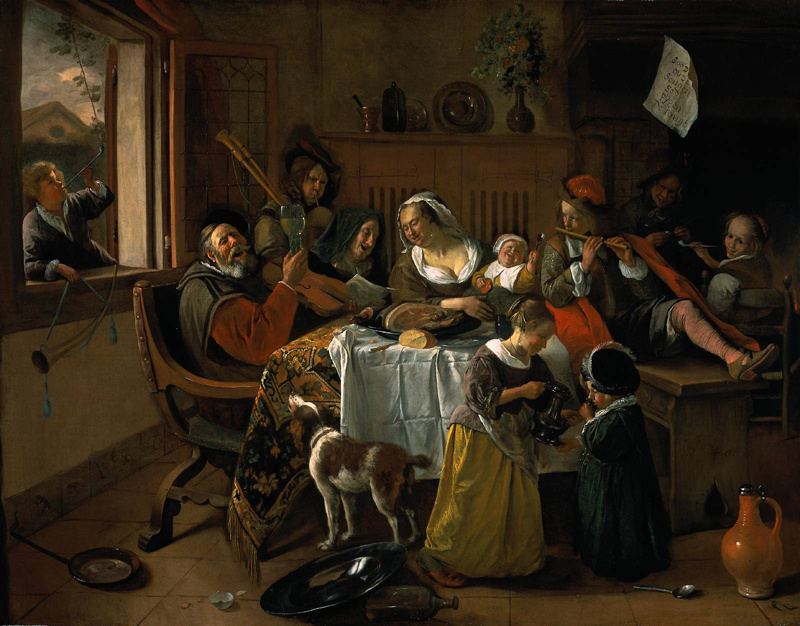We're nesters. Objects have been given value since the notion dawned upon us that we could possess something. At Skara Brae (see photo in previous post), what are the earliest specimens of built-in shelving occupy a significant portion of the Neolithic dwellings. It was built to house items used for everyday purposes but items of great importance nonetheless. Objects become extensions of ourselves and since we house our objects in our homes, so do our homes become extensions of ourselves.
Homes may be thought of as bodies. They have an exterior, always on public display. Its facade or mask is what is presented to society. The interior, however (thanks, Dutchmen!) is private. Though it contains rooms that are "public," those rooms are still arranged in a precise manner, containing objects which showcase characteristics we prefer to highlight -- and others which we may not even be aware. On objects Russell Belk comments: "our accumulation of possessions provides a sense of the past and tells who we were, where we have come from, and perhaps where we are going." The objects that we keep in these rooms act as icons of our identity and we edit these objects giving prominence to the ones that frame our ideal persona.
Our past experiences dictate the way we design, arrange, entertain, and so on in our homes and we often tend to replicate places that made us feel good in the past. Our home also expresses our nature. What we must remember is that we and our environment do not exist separately. There is a person-environment dynamic created when a specific environment combines with the habitual ways in which we react to it.
Rooms are beyond a simple collection of things; rather, each item, from the throw pillow on the sofa to the candlesticks on the mantle to the ashtray in the living room has its own mini-history in relation to you. A few of the throw pillows were bought on your anniversary trip to Istanbul, the candlesticks were a wedding gift that you love to hate because they clash magnificently with your china, and the ash tray was your great-uncle's proudly displayed not because you smoke but because he got it in Marseilles while stationed there during the Second World War. Each item may not have a deep, meaningful tie to someone or somewhere but they are not floating around your house "just because." There is no such thing as "just because."
Dweller
the home within, the home without
Thursday, September 8, 2011
Saturday, August 6, 2011
The Notion of "Home"
"Home" was born around 1609 in the United Provinces of the Netherlands Spain Rome
 |
| "The Merry Family" by Jan Steen, 1668 |
The word “home” connotes both a physical place and the more abstract notion of a state of being. Both meanings of the English home have identical definitions in German, Danish, Swedish, Icelandic, and Dutch, all of which are derived from the Old Norse heima. “Home” both refers to the house – the domus – and the household. Home is “…of dwelling and of refuge, of ownership and of affection” (Witold Rybczynski, Home).
Before the Netherlands
 |
| Rembrandt's sketch "Interior with Saskia in Bed" |
We have the ability to make a place “feel like home.” Ivan Illich said that “all living is dwelling. …To dwell means to live the traces that past living has left. The traces of dwellings survive, as do the bones of people.”
 |
| Neolithic village of Skara Brae, Scotland, circa 3100-2500 BC |
Subscribe to:
Posts (Atom)